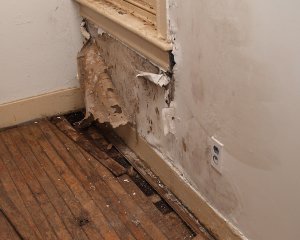We've stumbled on this great article relating to How to detect water leaks in your home directly below on the internet and accepted it made good sense to write about it with you over here.

Leakages not only trigger waste of water but can also create unneeded damage to your home and advertise undesirable natural development. Water leakages may go unnoticed since many of the pipework in our residence is hidden. By recognizing as well as looking for day-to-day circumstances that cause leakages, you can secure your residence from future leakages and unneeded damages. Today, we will consider 6 leakage triggers that may be creating your pipes to trickle.
Encroaching origins
Many water leakages start outside the home rather than inside it. You may see wet patches or sinkholes in your lawn, and that might mean that tree roots are getting into water lines creating water to seep out.
Corroded water supply
As time passes by, your plumbing system ages as well as corrosion such as rust may begin gnawing the pipelines. This may be the source of staining or warping on your water pipes. This requires an inspection with your plumber right away. Consider replacing the pipelines given that they are at a greater threat of corrosion than the newer models if our plumbing system is old.
Faulty Pipeline Joints
The factor at which your pipes connect is frequently the weakest link in the waterline. Pipe joints can weaken gradually, causing water leakages. The bulk of pipeline joints are not quickly noticeable. If you have noisy pipelines that make ticking or banging noises, particularly when the hot water is activated, your pipeline joints are probably under a great deal of stress. It is advisable to have your plumber evaluate your system yearly.
Instantaneous temperature changes.
Extreme temperature level changes in our pipelines can create them to broaden and get suddenly. This growth and contraction may create fractures in the pipes, especially if the temperature level are below freezing.
Poor Water Connectors
Sometimes, a leak can be triggered by loose hoses and also pipelines that supply your appliances. Most of the time, moving is what causes the loosened water Connections. You might discover when it comes to a cleaning machine, a tube may spring a leak because of trembling throughout the spin cycle. In case of a water connections leak, you may see water running straight from the supply line or puddles around your home appliances.
Blocked Drains
Clogged drains may be annoying as well as inconveniencing, but they can often wind up triggering an overflow causing break pipelines. Keep eliminating any type of materials that might go down your drains pipes that can obstruct them to prevent such hassles.
All the above are reasons for leakages but not all water leakages arise from plumbing leaks; some leakages may originate from roof covering leakages. All leaks should be repaired quickly to stay clear of water damage.
Leaks not only trigger waste of water however can also trigger unnecessary damage to your house and advertise unwanted organic growth. By looking and understanding for day-to-day situations that cause leakages, you can shield your house from future leakages and unnecessary damages. Today, we will certainly look at six leak triggers that might be creating your pipelines to leak.
At times, a leakage can be created by loose hose pipes as well as pipelines that supply your home appliances. In situation of a water links leakage, you may observe water running directly from the supply line or puddles around your appliances.
How To Check For Water Leak In Your Home
How To Check for Leaks
The average household's leaks can account for nearly 10,000 gallons of water wasted every year and ten percent of homes have leaks that waste 90 gallons or more per day. Common types of leaks found in the home are worn toilet flappers, dripping faucets, and other leaking valves. These types of leaks are often easy to fix, requiring only a few tools and hardware that can pay for themselves in water savings. Fixing easily corrected household water leaks can save homeowners about 10 percent on their water bills.
To check for leaks in your home, you first need to determine whether you're wasting water and then identify the source of the leak. Here are some tips for finding leaks:
Take a look at your water usage during a colder month, such as January or February. If a family of four exceeds 12,000 gallons per month, there are serious leaks.
Check your water meter before and after a two-hour period when no water is being used. If the meter changes at all, you probably have a leak.
Identify toilet leaks by placing a drop of food coloring in the toilet tank. If any color shows up in the bowl after 10 minutes, you have a leak. (Be sure to flush immediately after the experiment to avoid staining the tank.)
Examine faucet gaskets and pipe fittings for any water on the outside of the pipe to check for surface leaks.
Undetected water leaks can happen without the home or business owner even realizing. If you suspect a water leak, but not able to find the source. It is time to contact a professional water leak detection service, The Leak Doctor.
How To Find a Water Leak In Your Home
https://www.leakdoctor.com/blog/How-To-Check-For-Water-Leak-In-Your-Home_AE197.html

I ran across that article on How to detect water leaks in your home while looking around the internet. Do you know anybody else who is serious about the topic? Please feel free to share it. I value reading our article about How to Find Water Leaks.
Call Us Today